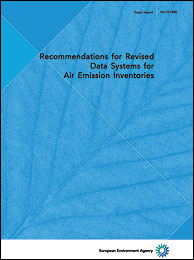All official European Union website addresses are in the europa.eu domain.
See all EU institutions and bodiesTopic report 12/1996
EN PDF: GH-03-97-797-EN-C - ISBN: 92-9167-033-2
All official European Union website addresses are in the europa.eu domain.
See all EU institutions and bodiesTopic report 12/1996
Report (PDF)

Recommendations for Revised Data Systems for Air Emission Inventories
Topic report 12/1996
02 Jun 1997
EN PDF: GH-03-97-797-EN-C - ISBN: 92-9167-033-2